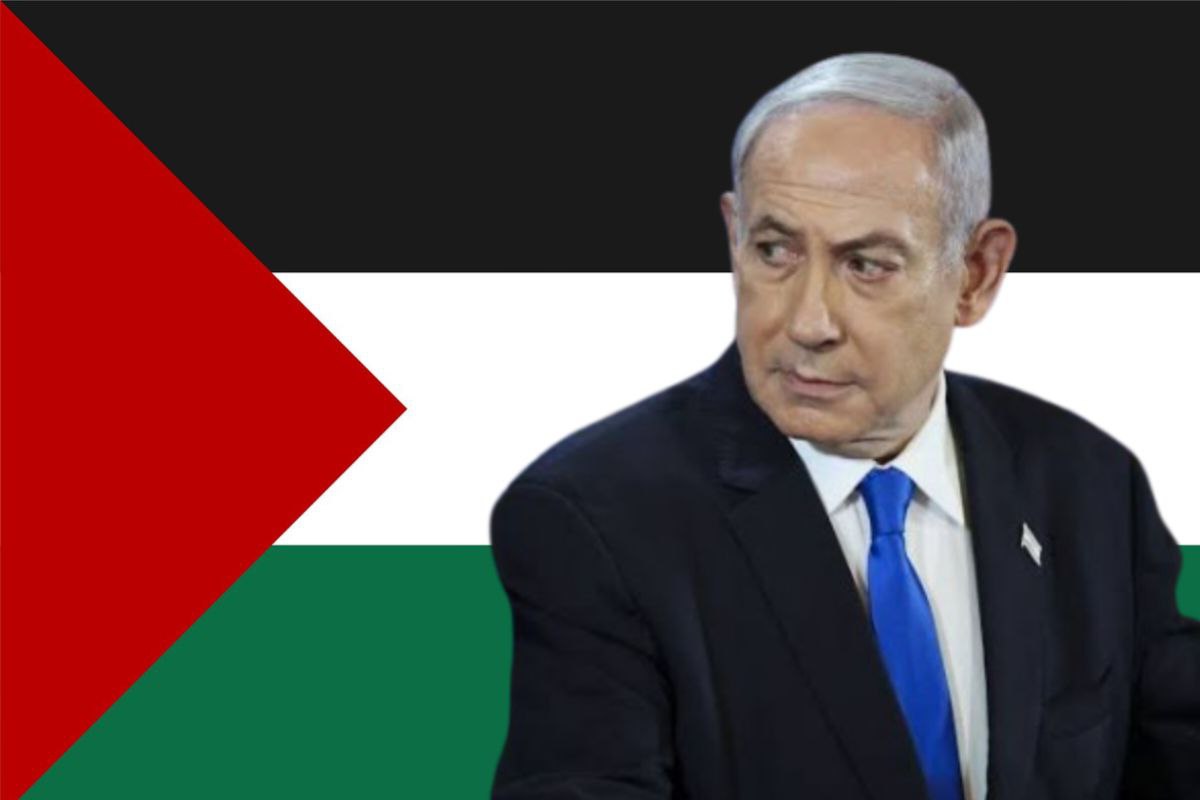In a major escalation of the Israel-Hamas conflict, Israeli Prime Minister Benjamin Netanyahu has approved a full military occupation of the Gaza Strip, reversing previous strategies and igniting global condemnation. The plan includes expanding operations into densely populated areas, displacing civilians, restricting humanitarian aid, and risking the lives of remaining hostages.
With over 60,000 Palestinians already killed and Gaza on the brink of famine, international aid groups and governments have warned of ethnic cleansing and war crimes. This article explores the full scope of the occupation plan, its strategic and humanitarian implications, and the intense domestic and international backlash it has sparked.
Netanyahu Approves Full Occupation of Gaza
The ongoing Israel-Hamas conflict, reignited on October 7, 2023, by a deadly Hamas attack that killed approximately 1,200 Israelis—mostly civilians—has escalated into one of the most devastating military campaigns in the region’s history. Since the assault, Israeli military operations in Gaza have resulted in over 60,000 Palestinian deaths, including thousands of children, according to Gaza health officials and various international bodies. An estimated 2.3 million residents have been displaced, rendering much of Gaza uninhabitable.
In the wake of the October attack, Hamas abducted 251 hostages. As of now, 50 to 59 hostages remain in captivity, with some reportedly still alive. Ceasefire talks mediated by Qatar, Egypt, and the United States have consistently stalled, with both sides trading accusations over broken agreements and failed negotiations.
Since March 2, 2025, Israel has imposed a total blockade on Gaza, cutting off humanitarian supplies including food, medicine, and fuel. The United Nations has warned that the blockade has brought Gaza to the brink of famine, accusing Israel of using starvation as a method of warfare—an accusation strongly denied by the Israeli government. In November 2024, the International Criminal Court issued arrest warrants for Israeli Prime Minister Benjamin Netanyahu and former Defense Minister Yoav Gallant for alleged war crimes and crimes against humanity, including the use of starvation tactics.
What Is the Plan?
On August 4, 2025, Prime Minister Netanyahu approved a plan for the full military occupation of the Gaza Strip. This marks a significant shift from Israel’s previous strategy, which involved control over 75% of Gaza while avoiding densely populated areas where hostages are believed to be held.
The plan includes the following core elements:
Full Military Control: The Israel Defense Forces (IDF) will now move to occupy the remaining 25% of the Gaza Strip, including crowded refugee camps in central Gaza. Unlike past incursions, this is not a limited raid but a plan to hold territory indefinitely.
Operations in Hostage Zones: The plan permits military action even in areas where hostages are likely being held. This comes after Hamas released videos showing emaciated captives such as Rom Braslavski and Evyatar David. In past incidents, including the execution of six hostages in Rafah in September 2024—among them American citizen Hersh Goldberg-Polin—Hamas has warned of retaliatory killings if Israeli forces advance.
Displacement of Civilians: Netanyahu has publicly stated that Gaza’s population will be relocated southward “for their protection.” The majority are expected to be pushed toward Rafah or a proposed “humanitarian zone,” as outlined in Israel’s May 2025 military framework. However, Palestinians and aid agencies have denounced the strategy as forced displacement. Many residents refuse to evacuate again, citing the suffering endured in previous displacements.

Humanitarian Aid Under Private Control: Under the new plan of Netanyahu, the distribution of humanitarian aid will be removed from United Nations agencies and transferred to private companies, including U.S.-based security contractors. Although Israel resumed limited aid delivery in May 2025 under international pressure, only 5 to 100 trucks have been allowed daily—far short of the 500 trucks needed, according to aid groups. Organizations such as the UN and Doctors Without Borders argue that this new structure violates humanitarian principles.
Influence of the Trump Administration: Reports indicate that the Netanyahu led plan closely aligns with a proposal backed by U.S. President Donald Trump, which includes displacing the population and potentially transforming Gaza into a “freedom zone” or a “Riviera of the Middle East.” This concept has been widely condemned by regional states and human rights groups as an act of ethnic cleansing.
Political Endorsement and Security Cabinet Support: Netanyahu Israel’s Security Cabinet gave unanimous approval to the occupation plan in May 2025. A follow-up meeting to finalize logistics was scheduled for August 5. Far-right ministers such as Bezalel Smotrich and Itamar Ben-Gvir have strongly backed the full occupation, with Smotrich stating that there will be “no withdrawal” even if the hostages are freed.
Domestic and Global Response
Opposition in Israel: Within Israel, Netanyahu the plan has stirred deep divisions. The IDF reportedly raised concerns over both the safety of hostages and the sustainability of occupying all of Gaza. Chief of Staff Lt. Gen. Eyal Zamir reportedly faced calls to resign if he opposed the plan. Opposition leaders like Yair Lapid and Yair Golan criticized the government for risking hostages’ lives and dragging Israel into prolonged conflict. The Hostages and Missing Families Forum called the plan “a sin upon a crime,” accusing Netanyahu of abandoning those still held captive.
Palestinian Resistance: Hamas rejected the occupation move, renewing its demand for a permanent ceasefire, full Israeli withdrawal, and reconstruction efforts. Palestinian civilians, including individuals like Ahmed Shehata and Osama Tawfiq, said they would not leave their homes again, citing unbearable conditions in prior “safe zones.”
International Condemnation: The United Nations, European powers such as France, Germany, and the UK, and humanitarian groups have strongly opposed the occupation plan. The UN’s human rights chief described the mass relocation effort and food restrictions as potentially forming part of a “permanent demographic shift,” which could constitute ethnic cleansing under international law.
US Policy Position: While the Trump administration is reported to have given a “green light” to the plan, U.S. envoy Steve Witkoff emphasized that Israel was acting within its sovereign rights. President Trump has also expressed concern about Gaza’s humanitarian catastrophe but has been criticized for proposing population displacement as a solution.
Humanitarian Fallout and Strategic Ramifications
Worsening Humanitarian Crisis: The blockade and airstrikes have left Gaza on the edge of collapse. UNICEF has reported that 28 Palestinian children are dying from starvation each day. The United Nations estimates that 92% of Gaza’s homes have been destroyed, and since May 2025, around 1,400 Palestinians have died while attempting to reach humanitarian aid. The limited aid resumption is widely considered inadequate.
Hostage Fatalities: The decision to proceed with military operations in areas with known hostages has alarmed families and advocates. Several relatives, including Einav Zangauker, have publicly condemned the plan, alleging that Netanyahu is sacrificing lives for political gains.
Permanent Occupation Concerns: Many analysts believe the plan could lay the groundwork for permanent Israeli control over Gaza. Far-right ministers have openly advocated for rebuilding Jewish settlements in the region, potentially reversing Israel’s 2005 withdrawal. This would likely provoke further diplomatic fallout and possible sanctions.
Regional and Global Repercussions: The plan has strained Israel’s relationships with Arab neighbors like Jordan and Qatar, and the European Union is now reassessing its trade relations with Israel. Widespread displacement of Palestinians could destabilize bordering countries and trigger broader regional unrest.
Netanyahu’s Objectives
In defending the occupation plan, Prime Minister Netanyahu outlined three main goals:
- Destroy Hamas and dismantle its military infrastructure.
- Secure the return of all Israeli hostages, dead or alive.
- Ensure that Gaza can no longer pose a threat to Israeli security.
As the situation continues to deteriorate, the full occupation of Gaza may mark a dangerous turning point—not only in the Israeli-Palestinian conflict but in the global conversation on humanitarian law, military ethics, and the future of the Middle East. With both sides entrenched, the human cost continues to mount, and the international community faces increasing pressure to intervene more decisively.

